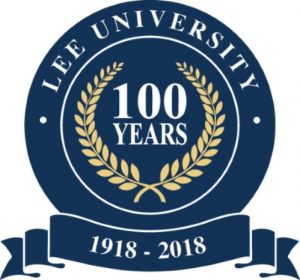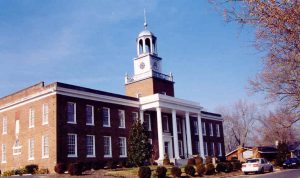Lee University at 100: The First 25 Years
In recognition of the 100th birthday of Lee University this year, Faith News is presenting a series of four articles on the history of the Church of God’s premier educational institution. This first in the series recalls the first 25 years (1918-1943). The article is a reprint from an appearance in the Lee University Torch, written 25 years ago in 1993 by the late Charles W. Conn, a former president of Lee and general overseer of the Church of God. Conn is also author of Like A Mighty Army, a history of the Church of God.

A Bold Purpose
Church of God entrance into the field of higher education was paradoxical in several ways: it was both bold and tentative, daring and cautious, timely, and ill-timed.
The church began the school that would become Lee University at a time when some of its fellow Pentecostal bodies felt such an endeavor to be questionable and inadvisable. Behind that view was a prevalent conviction that Jesus would soon return to the earth. That over-arching belief put all emphases on the immediate rather than the distant future. It was considered by many to be pointless to commence a process designed for distant benefits.
In 1911 the effort was made to found a preparatory school for the training of workers. A committee of five was appointed “to locate a place and erect a building for this school.” A seven man “board of education” was also appointed, which indicates the church’s earnestness about a school. And yet, seven years would pass before that desire was realized.
The Shaky Beginning
In November, 1917, the final plans were laid at the General Assembly: A school, to be called Bible Training School, was instituted, “for the training of young men and women for efficient service on the field.” The classes were to meet in the upstairs of the new publishing house, in the room where the recently instituted Council of Twelve held its meetings. The first class of 12 students from four states met on January 1, 1918. Mrs. Nora Chambers, a lady evangelist and publishing house proofreader, was the only teacher.
It was a desperate time for the country and the church. World War I was being fought, and a deadly influenza epidemic gripped the entire country. It was a severe winter, and the accommodations were at times insufficient protection from the bitter cold. Several students withdrew from school, and only six stayed the course until the three-month term closed on April 5, 1918. A student died of influenza during the second three-month term.
Despite the shaky start, there was no discouragement at the school. By the end of 1918, World War I was over and things began to look brighter for everyone. On April 4, 1919, the first two graduates of the three-term B.T.S. course, A.D. Evans and R. Earl Hamilton were awarded their diplomas.
When the fourth term began in September, 1919, the deadly flu epidemic had passed and hopes for the fledgling school soared. A correspondence course was introduced for those who wanted to continue their education but were unable to become resident students of B.T.S. This had been planned from the beginning of the school, and it was an immediate success. Within one year 788 persons enrolled as correspondence students.
The Earliest Leaders
The first superintendent of the Bible Training School was A.J. Tomlinson, general overseer of the Church of God. He was more than a titular leader, but he brought to the school an admirable academic preparation and gave active and capable guidance to the young institution.
Nora Chambers, the first teacher, was a woman of courage and ability, rare intelligence and considerable education. As a pioneer evangelist she had met and overcome many hardships. She worked for the Lord under physical duress, and faced frequent threats of bodily harm or death. As a teacher, she imbued her students with the same sense of dedication to a worthy cause, and persistent effort in the face of obstacles.
Among her students were numerous persons who would later become distinguished in the work of the church. Such early pupils as Paul H. Walker, John C. Jernigan, H.L. Chesser and Zeno C. Tharp became outstanding leaders of the Church of God.
In 1922, F.J. Lee became the superintendent (or president) of the school. That proved to be a blessing because Tomlinson was separated from the church in 1923 and new leadership salvaged the good work that was begun. When Lee was elected general overseer in 1923, J.B. Ellis was selected to head the school. He, like Lee, served the school for only one year. The school, moved during Ellis’ tenure from the publishing house to the newly-constructed Assembly Auditorium in Cleveland. In 1924, T.S. Payne became B.T.S. president, a post he would hold for six years.
A Progressive Era
From 1930 to 1934, the school took a decided upward turn. Under the leadership of its youthful president, J.H. Walker, programs of music (under Otis McCoy), a high school division (under R.R. Walker), and commercial studies were added to the curricula. Enrollment rose from 87 to 131, with an additional 123 students in a music normal or other special subjects. Walker remained at B.T.S. until 1935, when he was elected, at age 35, general overseer of the Church of God.
The Spartan Code
The life of the students was sturdy business in those days. The serious pursuit of learning was first, foremost and virtually altogether, the activity of the student body. There was little or no time for the recreational and social interests of other schools. Some aspects of the rules and regulations would make today’s students blanch in disbelief. There was simply no time for fun and games during that first generation of the school. Most of the students had to work at some job to help with their expenses. There was kitchen work, dormitory work, boiler room work, campus work and a myriad of others. Saturdays were usually given to some en masse project, such as cleaning the campus, repairing buildings or other needy improvements.
There was little or no intermingling of the sexes. Girls had their part of the campus and boys had theirs. That usually carried over into seating assignments in classrooms, dining rooms and worship services. Violators could expect to be chastened with demerits, which then had to be worked off. Of course, there were those special occasions when fraternization was allowed, but all under the watchful eye of chaperons. Those cherished times were rare and well-anticipated Sunday afternoons or holidays. Still, romances did develop; and, as is attested by a generation of older alumni, successful, happy marriages resulted.
What the students may have missed in social exchanges was made up in spiritual activity. Chapel services were almost daily, and there were revivals, gospel music concerts and all night prayer meetings. The administration shared the needs of the school, spiritual and otherwise, with the students and sought their prayers and supplications. The spiritual side of student life had a wonderful bonding effect: student-with-student and student-with-teacher. The Spartan way of life created a collegiality that was real and lasting.
Years of Challenge

This building, which still stands today as the primary landmark of the Smoky Mountain Children’s Home, was the focal point of the Bible Training School campus when it occupied the Sevierville location from 1938 – 1947.(click photo to enlarge)
The years 1935 to 1943 brought the school great opportunities and led it to the threshold of respectability as a serious academic institution. Zeno C. Tharp, who like Walker before him, was an alumnus of the school. Tharp was superintendent for nine years, 1935 to 1944. He guided the school through years of financial difficulty, and the restrictive days of World War II. Growth demanded larger facilities. This need was eased temporarily by the purchase, in 1938, of the old Murphy Collegiate Institute in the picturesque town of Sevierville, Tennessee. Enrollment grew steadily past 200, and the faculty was enhanced by such teachers as Avis Swiger, who would become the grande damme of missions and evangelism instructors.
There was impressive physical expansion, but the greater growth was in academic mood and purpose. Dreams of accreditation were born, and the high school was accredited by the Southern Association of Colleges in 1941. B.T.S., which had been much like a cozy family of learners, now began a steady march toward becoming a college in the finest sense. In 1942 the church opted to elevate B.T.S. to Bible Training School and College. Now the erstwhile office of superintendent of education would become that of president. A long-dreamed-of student yearbook was finally launched in 1942, under the imposing name of Vindagua, which meant “window” or “place of vista.”
In 1943, the first 25 years of the school ended on an opportunistic level. Among the 450 students enrolled that year were many sons and daughters of those who had been there before them. A full generation had passed through the halls of academia in the Church of God. It was a milestone from which the future was as promising as the past was memorable.
Part Two: 1944-1968




